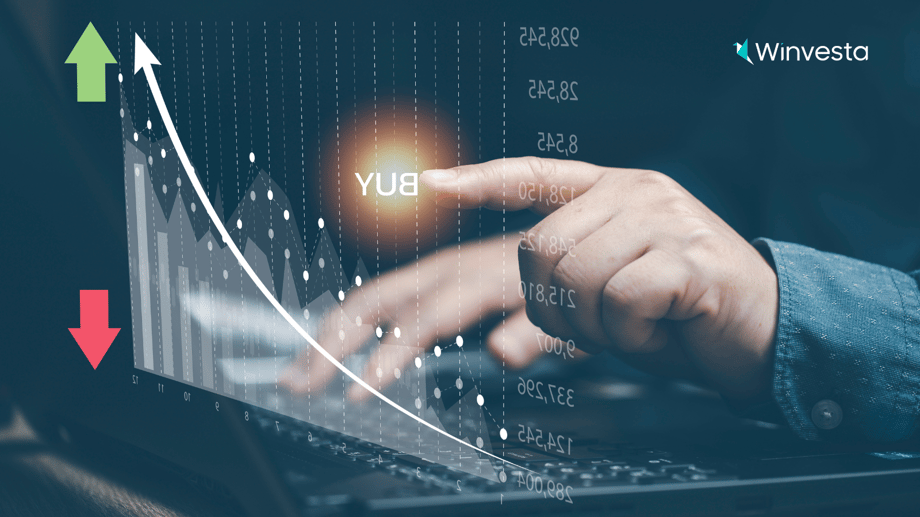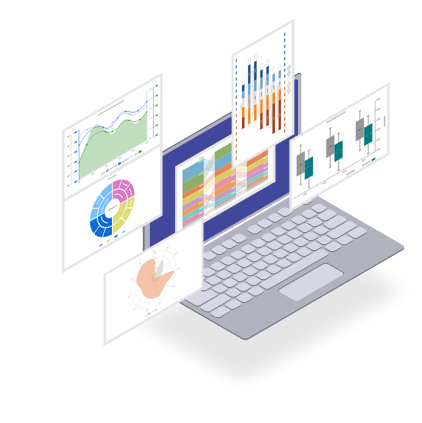Contents
Why U.S. banks remain strong investments in 2025
5 minutes read
01 April 2025

The financial sector in 2025 is experiencing significant transformation, marked by the rapid adoption of technology, regulatory changes, and evolving customer expectations. Amidst these changes, U.S. banks have demonstrated remarkable resilience, establishing themselves as solid players in the global financial system. This blog explores why U.S. banks remain a strong investment option despite the ever-evolving landscape.
The importance of U.S. banks in the global financial system
U.S. banks have long played a pivotal role in global finance, and their continued strength is vital for the stability of the financial system. Despite challenges, such as market disruptions and regulatory shifts, these institutions remain attractive to investors due to their innovative strategies, robust performance, and reliable dividends. As technology reshapes the financial landscape, U.S. banks are well-positioned to thrive and offer investors long-term stability and growth.
Digital transformation and innovation in U.S. banks
The financial services industry is embracing digital transformation at an unprecedented pace. With advancements in artificial intelligence (AI), blockchain technology, and hyperautomation, U.S. banks are leveraging new tools to stay competitive and cater to evolving customer needs.
AI and hyperautomation: Revolutionizing banking operations
Artificial intelligence (AI) and hyperautomation are fundamentally changing banking operations. AI-powered solutions are being implemented in areas such as loan approvals, fraud detection, and customer service. These technologies streamline processes, reduce operational costs, and improve efficiency, allowing banks to enhance customer experiences while maintaining strong profit margins.
Moreover, hyperautomation, which integrates robotic process automation (RPA) with AI, further optimizes operations by automating repetitive tasks. This integration reduces the need for human intervention, allowing banks to cut costs and improve overall productivity.
Blockchain technology: Enhancing security and transparency
Blockchain is another key technology transforming U.S. banks. Known for its ability to offer secure, transparent, and immutable records, blockchain technology is revolutionizing how transactions are processed, especially in cross-border payments. By reducing fraud and enhancing transparency, blockchain ensures that U.S. banks can offer more secure and efficient services to their clients.
Customer-centric innovations: Hyper-personalisation
Banks are increasingly using advanced data analytics to offer tailored financial products to customers. This level of hyper-personalization, driven by AI and machine learning algorithms, ensures that banks can provide unique services based on individual preferences. This innovation not only boosts customer satisfaction but also helps U.S. banks stay competitive in an ever-evolving market.
Strong performance of U.S. banks in 2025
Despite the challenges of a changing financial landscape, U.S. banks have shown incredible resilience, achieving strong financial performance. This performance can be attributed to factors like healthy capital adequacy ratios, low credit provisioning expenses, and conservative leverage practices.
Large-cap banks: Leading the way in profitability
Major U.S. banks such as JPMorgan Chase have reported impressive earnings in 2025, driven by higher net interest margins and relatively low credit costs. These large-cap banks are benefitting from a combination of favorable economic conditions and strong risk management strategies, positioning them as top choices for investors looking for stability and growth.
Small and mid-cap banks: Growing in strength
U.S. small and mid-cap banks have also demonstrated solid financial strength. While they faced challenges in the wake of market disruptions in 2023, these banks have since recovered, maintaining strong capital levels. This financial resilience has positioned them for growth in 2025, making them attractive to investors seeking opportunities in smaller institutions with high potential.
Capital adequacy: A key strength
Both large-cap and small/mid-cap banks in the U.S. maintain high levels of capital adequacy. These strong capital buffers provide a safety net in times of economic uncertainty, reassuring investors that U.S. banks are well-positioned to handle adverse financial conditions.
Regulatory environment and financial inclusion: A new era
The regulatory environment for U.S. banks is undergoing significant changes under a new administration focused on deregulation. These changes present both opportunities and challenges for banks, but they are helping to create a more dynamic environment for investment.
Deregulation: Driving operational efficiencies
The easing of regulatory constraints has allowed banks to operate more efficiently. With fewer regulatory burdens, U.S. banks have greater flexibility to innovate and grow, leading to higher profitability. Moreover, this deregulation is likely to fuel mergers and acquisitions (M&A) activity within the banking sector, creating operational efficiencies that will benefit investors.
Financial inclusion: expanding access to banking services
At the same time, U.S. banks are embracing initiatives aimed at increasing financial inclusion. Mobile-first banking platforms, along with alternative credit scoring methods, are helping to bridge gaps for underserved populations. By reaching new customer segments, U.S. banks are not only expanding their market reach but also contributing to broader societal goals.
These regulatory changes, combined with a focus on financial inclusion, position U.S. banks as both socially responsible and financially sound institutions.

Ready to own a piece of the world’s biggest brands?
- Invest in 4,000+ US stocks & ETFs
- Fractional investing
- Zero account opening fees
- Secure and seamless
Start investing in just 2 minutes!

Build your global portfolio.
.png)
Invest in companies you love, like Apple and Tesla.

Track, manage, and grow your investments.
Investment opportunities in U.S. banks in 2025
Given their strong performance, innovative strategies, and favorable regulatory environment, U.S. banks present attractive investment opportunities for those looking to capitalize on the ongoing transformation of the financial sector.
Mergers and acquisitions: A catalyst for growth
The easing of regulatory constraints has set the stage for increased M&A activity in the banking sector. Mergers and acquisitions often lead to operational efficiencies, higher profitability, and the potential for long-term capital appreciation. Investors in U.S. banks could benefit from these strategic consolidations.
Dividend growth: Reliable income streams
One of the key reasons to invest in U.S. banks in 2025 is the potential for steady dividend growth. Many U.S. banks are expected to continue increasing their dividends, offering attractive returns for income-focused investors. This makes U.S. banks an appealing option for those looking for stable and predictable income streams.
Valuation recovery: Small/mid-cap banks present opportunity
Small and mid-cap banks, in particular, are trading below their historical valuation averages. As these institutions recover from past disruptions and improve their earnings, investors may see significant capital appreciation potential in these undervalued stocks.
U.S. banks as strong investments in 2025
In conclusion, U.S. banks are adapting to a rapidly changing financial landscape by embracing technological innovation, maintaining strong financial performance, and navigating evolving regulatory changes. Their resilience makes them an essential part of the global economy and an attractive investment choice for 2025.
With technological advancements driving efficiency, favorable market conditions supporting profitability, and a deregulated environment fueling M&A activity, U.S. banks offer compelling investment opportunities for those seeking stability and growth in the financial sector.
Frequently asked questions about why the U.S. banks remain strong in 2025


Contributed by Denila Lobo
Denila is a content writer at Winvesta. She crafts clear, concise content on international payments, helping freelancers and businesses easily navigate global financial solutions.



